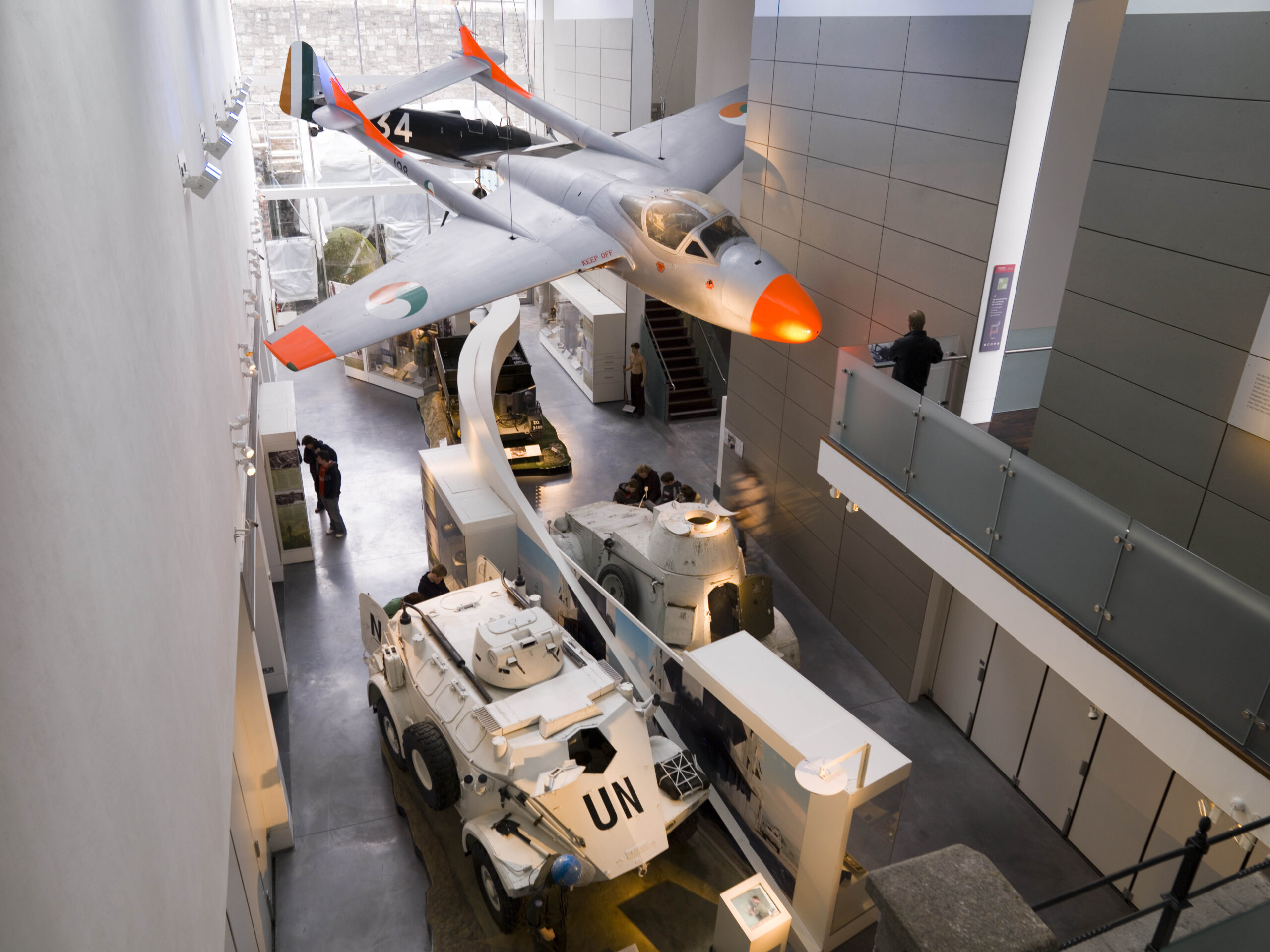By Lar Joye
The Irish Air Corps was created in early 1922 and saw combat during the Civil War. Like the rest of the Defence Forces, however, its budget was limited in the years prior to the Emergency (1939–45) and by 1936 it had only sixteen planes. In the build-up to the war this increased to 40 aircraft, of which 23 were combat-capable, according to the aviation historians Joe Maxwell and Patrick Cummins. Additional planes were added during the Emergency from RAF surplus supplies, and in 1947 twelve Vickers Supermarine Spitfires were purchased and used until 1955.

In 1956 the Air Corps moved into the jet age when the distinctive de Havilland Vampire T55 took to Irish skies. This was an advanced training aircraft based on the Vampire fighter jet, which was first flown in 1943; the egg-shaped cockpit was made of plywood, while aluminium was used around the engine and wings. Overall, the plane proved very popular and served in twenty air forces, and was built in Australia, India and Switzerland. A number are still flying today as part of historical squadrons in the Norwegian, Australian and Swiss air forces.
From 1956 to 1975, the 1st Fighter Squadron (whose motto is Bead ach Fiachmhar, ‘Small but fierce’) flew six of these modern jet aircraft. Their role was as fighter planes as well as providing advanced flying training to Air Corps pilots. They were the first jet planes in Ireland, and it would take Aer Lingus until 1961 to join the jet age with the Boeing 720. They were also the first planes in Ireland to feature a new invention—the Martin-Baker ejection seat. On 5 May 1961 Cadet Richard McPartland was the student on board, with Comdt J.B. O’Conner as instructor. They were practising spin recovery, which failed, and the student was ordered to eject from the plane at 10,000ft, becoming the first person in Ireland to be ejected in an emergency. Happily for Comdt O’Conner, the force of the ejection stopped the plane from spinning, and it landed safely.
Operating complex planes like the Vampire required the building of two concrete runways and a control tower at a cost of £537,850 at Baldonnel Airport, where they were based. Today you can see one of these planes in the Soldiers & Chiefs exhibition in Collins Barracks, while another from the recently closed Air Corps Museum has been loaned to the Shannon Aviation Museum.
Weight: 3,290kg (7,253lb)
Armament: Four 20mm Hispano cannon in nose, plus either two 227kg (500lb) bombs or eight 27kg (60lb) rocket projectiles
Powerplant: One 1,400kg (3,100lb) thrust de Havilland Goblin 2 centrifugal flow turbojet
Max. speed: 861kph (535mph)
Initial climb: 1,235m/min. (4,050ft/min.)
Service ceiling: 12,000m (40,000ft)
Range: 1,883km (1,170 miles)
Crew: Two, each with a Martin-Baker ejection seat
In Irish service: 1956–75
